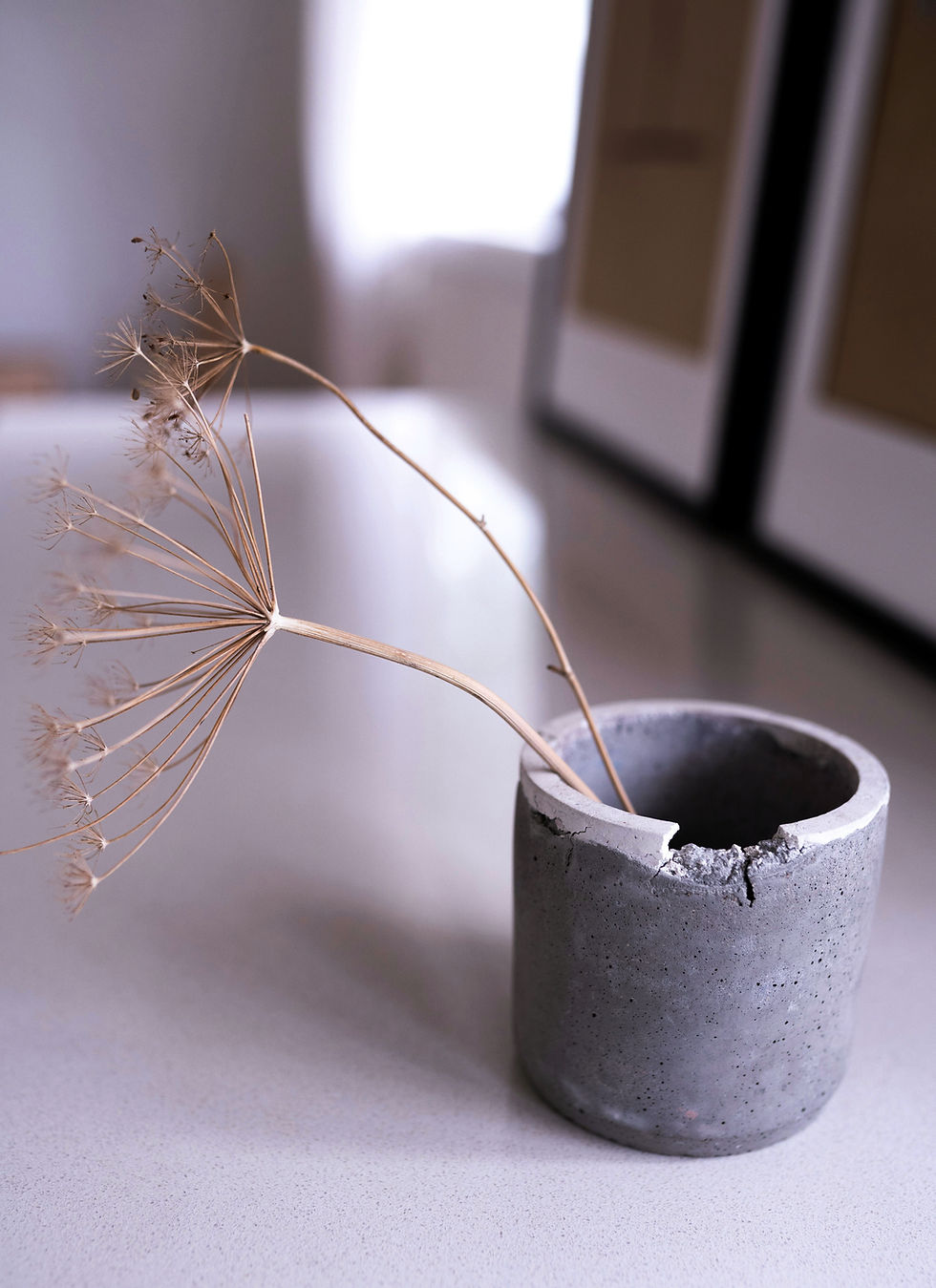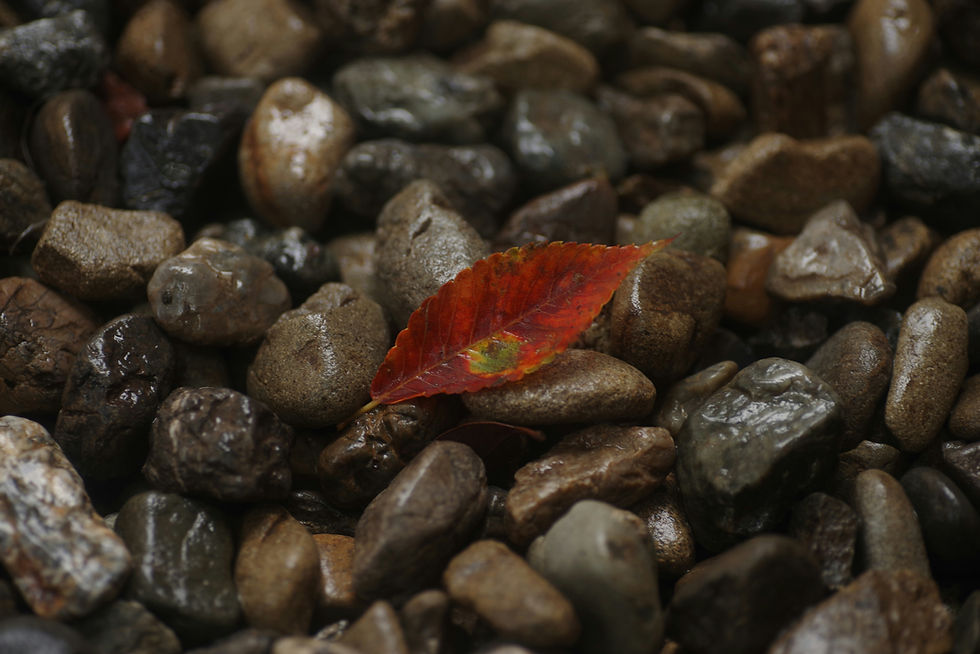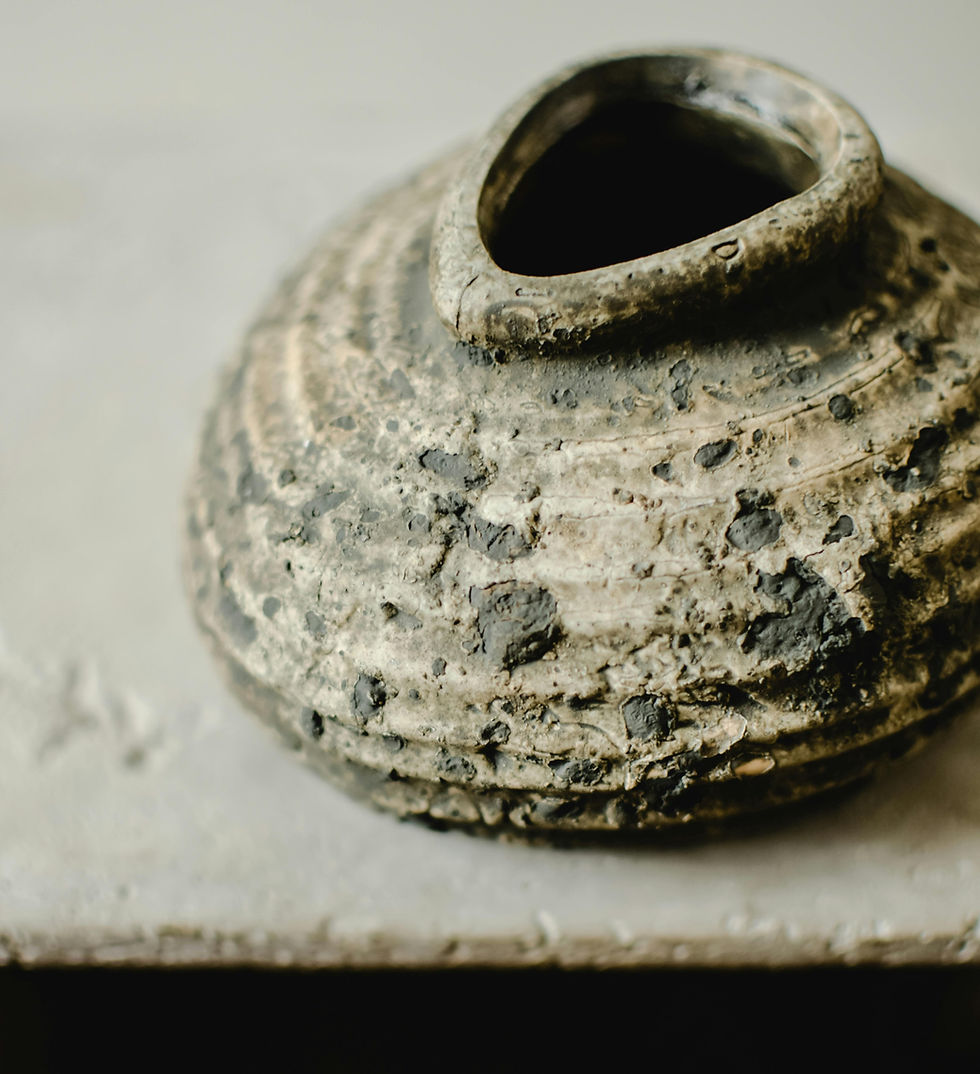How to Deal with Imperfections in Art through the Wabi-Sabi Effect
- Sutithi

- Sep 28
- 6 min read
Updated: Oct 14

“Imperfection becomes intentional and valuable, not a flaw to be corrected.”
Imagine a heartbreaking scenario — you have just smashed a delicate China dish or a porcelain tableware that was once purchased after a lot of haggling! Can you dare look at those shattered pieces to reclaim their beauty or will you just throw them at once? Take a pause.
In traditional Japanese art and aesthetics there is a sacred space for these broken things. Sounds a bit strange? Yes, Japanese celebrate the ideal of impermanence, imperfection, and incompleteness. That’s how the concept of Wabi Sabi emerged. It adores the beauty of all the things that are transient, impermanent, and incomplete. The form has widely embraced organic forms, natural materials, and asymmetry. We can as well call it an art of weathering!
Don’t you think it’s good enough to release the pressure of being perfect! That’s a truly liberating part of the Wabi Sabi art. Even in the Japanese Kintsugi art form, we will find this principle of embracing imperfection or volatility.
People repair the broken vases, potteries, or glassware with gold to make them sturdier and beautiful than ever before! Flaws and imperfections aren’t a setback — they can become a muse for an artist, (blessings for those who are in the habit of breaking things often)!
What Do These Two Words Mean in Real Sense?
“It reminds us that all things, including us and life itself, are impermanent, incomplete, and imperfect. Perfection, then, is impossible.”– Omar Itani
Wabi and Sabi — chiming like some blessed twins, speak of the austere, subdued beauty which is carefree. Deeply rooted in Zen Buddhism, it admits emptiness, transience, and suffering, which comes from the ancient Buddhist teachings. This art has been an innate part of Japanese aesthetics and culture where beauty lies within the cycle of growth & decay. Beauty doesn’t have to be superfluous, it can be as simple and straight like a plain looking earthen pot.
It's bliss to find beauty in commonplace things like enjoying a sunrise, a walk into the forest, or taking care of your garden hedges. Thus, Wabi Sabi design embraces things lacking symmetry, hugging simple joy, natural grace, with its raw and austere appeal.

Cultural Relevance & Contemporary Take on Wabi Sabi
Thus, for the contemporary Wabi Sabi painting, it has become a philosophy of rebellion against mass production and digitized perfection. At least, we can think something beyond the desperation of being permanently perfect!
Not only that, we get to connect easily with the contemporary desire for emotional bonding and authenticity.
Originating from the Zen principles, the natural aesthetics is applied to garden and interior designs, product packaging, UX design, designing of tanka or haiku, or following an imagery of solitude, where human irregularity is predictable.
In ceramic artworks also, the Wabi Sabi design and aesthetics is widely followed. The form has inspired the western studio pottery ethics, as we get to explore in Bernard Leach’s ‘A Potter’s Book’ disclosing the secrets, techniques, and aesthetics of the austere and original art ethics.
American artist John Konnel has also devoted his time to some serious works on Wabi Sabi.
Even in the mental healing process, Wabi Sabi for artists has been used experimentally to eliminate the stress of perfectionist thinking. We do feel the pressure to be perfect at times — through the art of imperfection Wabi Sabi you get rid of the harmful stress hormones like cortisol and surge your dopamine levels.
Wabi Sabi Art Used in Design and Architecture
Take any material like wood, linen, stone, or clay, Wabi Sabi will do justice to the naturally weathered and reclaimed materials.
It triggers the principle of stillness and open space, where art can breathe easy, thriving on minimalist designs and neutral tones. This has been a part of modern slow living and sustainable architectural designs, building on erosion, or aging, often overlooked in conventional art ethics.
Wabi Sabi for a Visual Artist

We think art must be immaculate and beyond ordinary as we have mostly related it to sophistication and refinement produced by the masters. But in Wabi Sabi art, a handmade vase with a broken handle can be as adorable as a perfect one, with its raw emotion and simplicity.
Now, what is Wabi Sabi for artists and how does it impact the creative process? Artists work on intuitions, raw textures, jagged edges, art objects with visible cracks, and unrefined surfaces to channel Wabi-Sabi. What it contains becomes more important than the container.
In the case of Wabi Sabi painting, it is a celebration of what is left untreated like the unrefined strokes of the brush, or the unfinished edges which might crave for a final go over.
What matters is the process over perfection - engaging stories, flaws, to be part of the whole artistic composition.
The Wonderful Ways of the Wabi Sabi

The bottom line is that nothing is perfect in this perfection-seeking world!
Though we pronounce the words at the same breath, they have different connotations -
Wabi refers to a sense of simplicity and the often-ignored, natural elegance.
Sabi is concerned with the passage of time and the way all things grow, age, and decay.
Together, they create a whole -- a way of life that makes you accept things as they are, to be grounded, and appreciate the small things in life.
What is the Unique Teaching behind the Art of Wabi Sabi?
Wabi Sabi is an elegant philosophy that teaches us how to stay connected in our day to day living. When we are deeply grounded, and stay rooted to nature, we feel in sync with our truest inner-selves.
It helps us to shade some extra burden that we carry along, and makes us search for the beauty in imperfection and accept the more natural cycle of life. We believe that all things including us and life itself, are temporary, incomplete, and imperfect. So, there is no place for perfection other than impermanence.
‘I humbly accept the truth with an open heart.’
In this rule, the teachings of the Japanese Yamabushi monks can be summed up like the wisdom of Uketamo, that is ‘I humbly accept the truth with an open heart.’
When you are in a constant fear of losing your dear one, or your job, practice Uketamo.
When you have met with an accident that has ruined all your meticulously scripted tour plans, just follow Uketamo. You will feel much better with each dollop of acceptance!
Be rooted, live the simplest truths; as you continue to resist, you prolong your suffering, only through acceptance you can have the freedom to grow!
Thrive for excellence, not for perfection!
Every year the anti-aging market reaps a huge profit in terms of billions of dollars. Even if they know that aging is involuntary and unavoidable, people are desperate to look younger. Let this realization slip in that ageing with the passage of time is a thing of beauty.
We are prone to find fault with things around thinking that they lack something, like they are not good enough. Even the same thing happens for our own selves. And we have allowed this thought to define our being. So, we take up all the pain to bring perfection to make us feel worthy and good enough inside ourselves.
The reality is that imperfection is the natural way of being that makes us the whole in all our complexity. We better not chase the illusion!
3. The Ideals of the ‘Golden Scars’ or the Kintsugi
Sometimes the broken scars in objects tell us fascinating stories, as beauty can lie beneath the surface of something broken, shattered, or tainted. Appreciate and embrace that beauty which is bare and bold. There’s no shame in imperfection, so let’s not hide it!

4. Slow down your life and enjoy!
Slowing down means simplifying things in a complicated and rush-worthy world. You need to slow down to introspect, study the situation, to be observant. You will start to feel the wisdom of the universe, so that you can enjoy doing such trifles like watering plants, listening to the soft patterns of rains, etc.
5. Experience the simple joy to be alive!
It’s better to shade illusions about the modern-day hyper-happiness, that will only trigger the sense of emptiness. While we chase happiness, it vanishes like thin air.
It is rightfully said that “What I have is all I need.”
You see, the root of all unhappiness is born from being discontent with where you are and what you have. It really is as simple as that.
If your mind is at peace with everything around, you can find beauty in more unlikely places showing you the doorway to delight!
So, next time you break a glass or an expensive art piece, think before you shove them down the garbage chute – even the broken pieces can make a coherent whole, which may not be immaculate, but can make better and sturdy pieces with your artsy mind.
Resign to this fragility and just be yourself, to be happy. It gives you permission, if you need it, to shake off that insane craving to be perfect, and this freedom itself feels like a victory!


